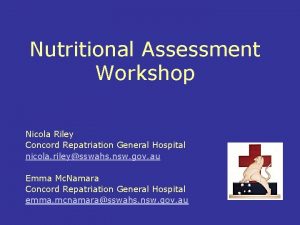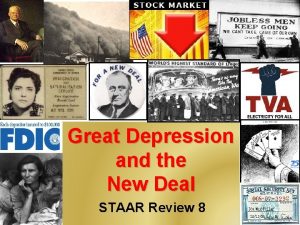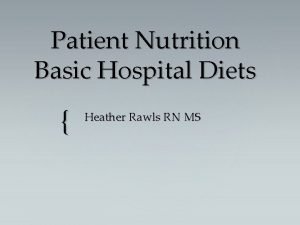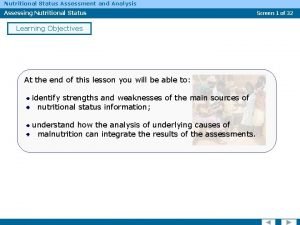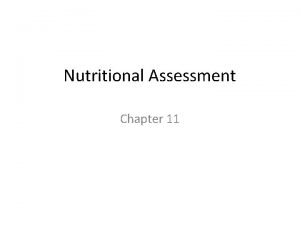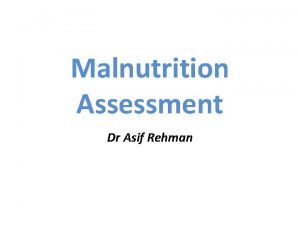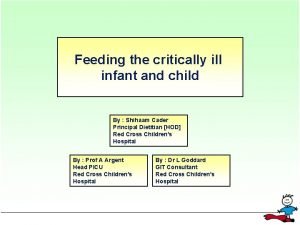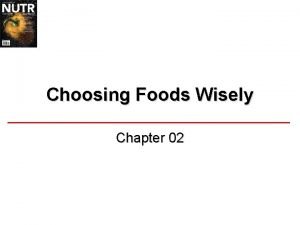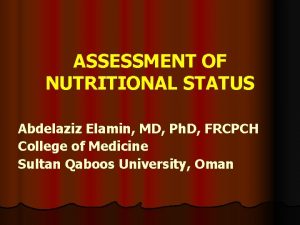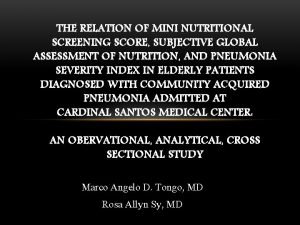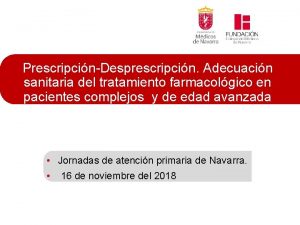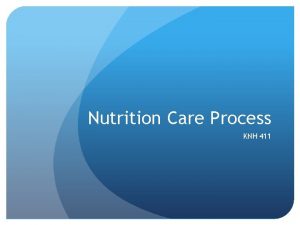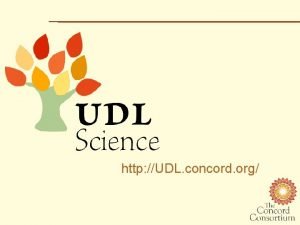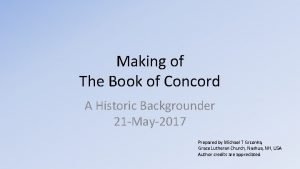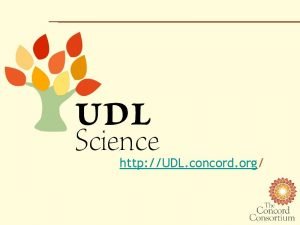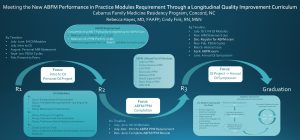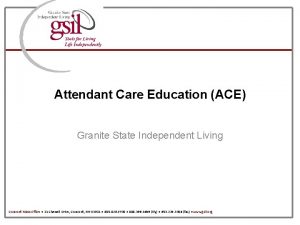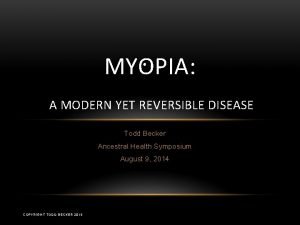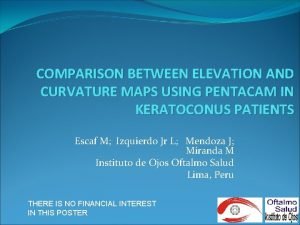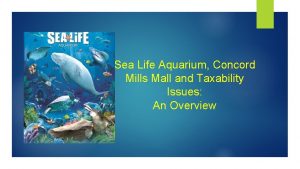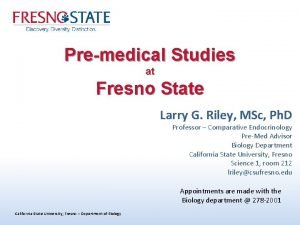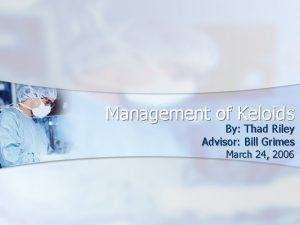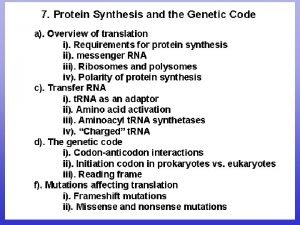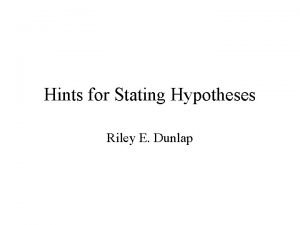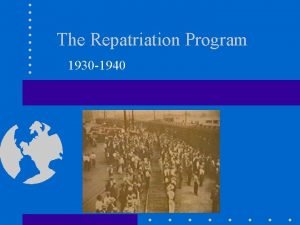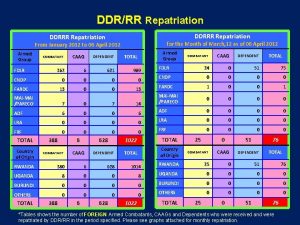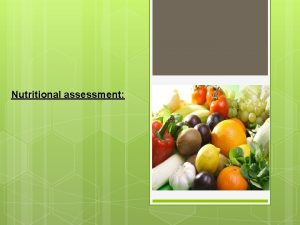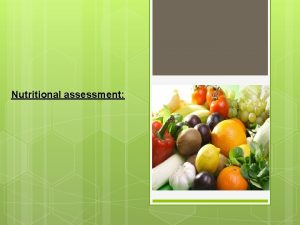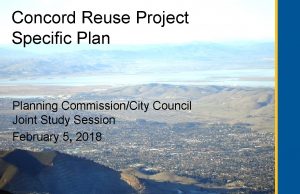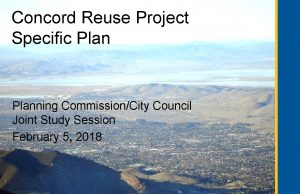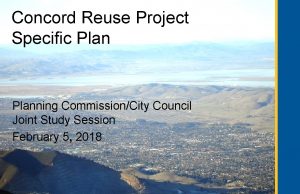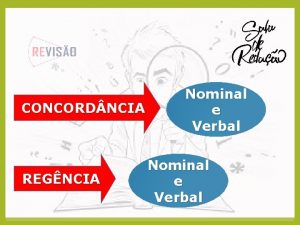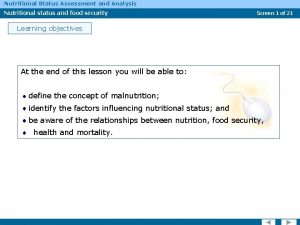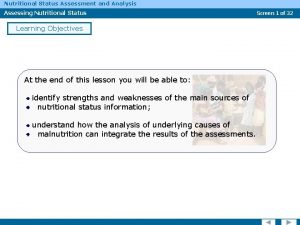Nutritional Assessment Workshop Nicola Riley Concord Repatriation General















































- Slides: 47

Nutritional Assessment Workshop Nicola Riley Concord Repatriation General Hospital nicola. riley@sswahs. nsw. gov. au Emma Mc. Namara Concord Repatriation General Hospital emma. mcnamara@sswahs. nsw. gov. au

What is Nutritional Assessment? “the evaluation of nutrition needs of individuals based upon appropriate biochemical, anthropometric, physical, and dietary data to determine nutrient needs and recommended appropriate nutrition intake including enteral and parenteral nutrition” - American Dietetic Association

Nutritional Assessment & Clinical Application - Overall View Nutrition Management: • Assessment • Intervention • Follow-up / Review • Evaluation Consider: • Health care setting • Disease / condition • Lifecycle / physiological state

Nutritional Status • “Nutritional Status expresses the degree to which physiologic needs for nutrients are met” • Optimal NS = Balance between intake and requirement • Malnutrition – state caused by nutritional deficiency – Reversible by providing appropriate nutrition support • Deficiency vs Overload (can be combination of both) • “whole person” focus, not just disease or condition focus.

Nutritional Risk • Critically unwell patients may be well nourished but high nutritional risk • Illness, injury, infection Metabolic derangements May have significant affect on nutritional status May lead to malnutrition Cannot be corrected by nutrition support alone • Patients at high nutritional risk will require early nutritional intervention and close monitoring

Why do we need to identify malnutrition? • Malnutrition is associated with: – length of stay in hospital – complications – hospital costs – mortality rates

Screening vs Assessment

Nutrition Screening Tools • Requirements – quick and simple to administer – sensitive enough to identify individuals at risk – appropriate for client group being screened – capable of being used by non-dietitians – reproducible when used by different observers – able to guide non dietetic staff into taking appropriate action for findings recorded

Malnutrition Screening Tool (MST) Have you lost weight recently without trying? If NO If unsure If YES, how much weight have you lost? 1 – 5 kg (2 – 11 lb) 6 – 10 kg (1 – 1½ st) 11 – 15 kg (1¾ - 2⅓ st) > 15 kg (> 2⅓ st) Unsure Have you been eating poorly because of a decreased appetite? If NO If YES Total If the score is 2 or more please refer to the dietitian. (Ref: Ferguson M et al, Nutrition 15: 458 -464, 1999) 0 2 1 2 3 4 2 0 1

The Short Nutritional Assessment Questionnaire (SNAQ) Question Score Did you lose weight unintentionally? >6 kg in the past 6 month 3 >3 kg in the past month 2 Did you experience a decreased appetite over the past month? 1 Did you use supplemental drinks or tube feeding over the past month? 1


Nutritional Assessment Tools • No single / standard way of assessing nutritional status • Various validated assessment tools developed – some disease specific – some age specific • 2 examples – Mini Nutritional Assessment (MNA) – Subjective Global Assessment (SGA)

Mini Nutritional Assessment (MNA) • Screening and Assessment tool for the identification of malnutrition in the elderly • Considers: – Dietary Intake – foods, patterns – Weight change, BMI, Muscle circumferences – Functional impairment, Independence, Living arrangements – Psychological issues, Self assessment

Subjective Global Assessment • Valid assessment tool • Strong correlation with other subjective and objective measures of nutrition • Highly predictive of nutritional status in a number of different patient groups • Quick, simple and reliable

Subjective Global Assessment…features • Medical History – Weight change – Dietary intake – GI symptoms – Functional impairment • Physical Examination – Loss of subcutaneous fat – Muscle wasting – Oedema and ascites

Subjective Global Assessment …Classifications A Well nourished B Moderately malnourished or suspected of malnutrition C Severely malnourished

Full Nutrition Assessment Step 1…Data collection • Systematic Approach • Assessment based on clinical/psychosocial/physical information – Dietary – Anthropometric – Biochemical – Physical • Including – Subjective (eg. signs/symptoms of nutritional problem, appetite) – Objective (eg. Lab results)

Data Collection… An Example… A B C D E Anthropometry Biochemical Data Clinical signs and symptoms, medical condition Dietary Intake Exercise (Energy balance – expenditure) Consider current level, history and changes

Anthropometry • Height • Weight history / pattern (% weight change) • Weight for Height • BMI • Growth Pattern, head circumference (paediatrics) • • • MAMC TSF Waist circumference Hip circumference WHR Be aware of fluid status, presence of oedema.

Anthropometry – Body Composition Muscle, Fat, Bone, Water Body Mass: • LBM – Body mass that contains small % (~3%) essential fat [Essential fat + Muscle + Water + Bone] • Fat Free Mass (FFM) Fat Store: • Essential Fat for physiological function, eg. fat stored in muscle, liver, heart • Storage fat in adipose tissue – visceral fat and subcutaneous fat

Body Compostion cont’d. • Practical Methods in Clinical Setting: – Weight, height & weight Hx – Skinfolds, circumferences • TSF, MAMC, WHR • More precise, occasional use: – Bioelectrical Impedance Analysis (BIA) • FFM, % body fat – Dynamometry (grip strength) • Precise, Expensive, Research purposes: – CT, MRI, Dexascan, TBK, TBN

Biochemistry & other Blood Tests (See also disease/condition specific lectures) • Objective measures • No single test is diagnostic • Consider “normal / recommended range” for various and combination of conditions, eg. age, gender, physiological state, disease type and stage • Consider clinical significance of test result • Test result may reflect immediate intake (eg glucose) or long term status (Hb. A 1 c)

Other factors to Consider… • Other factors can mask/influence test results eg. – Acute phase response due to stress / injury ( reduced albumin) – GI bleed (higher urea) – blood transfusion (higher serum K and Hb) – Surgery (lower Hb and albumin)

Acute Phase Response Inflammatory processes (shock, trauma, sepsis) liver protein synthesis shifts from visceral proteins, e. g. albumin and prealbumin to acute phase proteins Visceral proteins may reflect ‘nutritional risk’ not nutritional status

Nutritional Indicators • Ideal indicator or marker is sensitive and specific to nutritional intake Commonly Used “Nutritional Indicators” – Albumin – Pre-albumin – Transferrin – Retinol-binding protein

Albumin • Synthesised in the liver • May be useful indicator of nutritional status in “healthy” person. • Not a good indicator of protein status during critical illness (due to acute phase response) • Long half life (14 -20 days) and large body pool slow to respond to improvements in clinical status

Factors Affecting Serum Albumin Levels Increased in: – Dehydration, blood transfusions, exogenous albumin Decreased in: – Overhydration, hepatic failure, inflammation, infection, metabolic stress, post-op, bed rest, pregnancy, nephrotic syndrome.

Pre-albumin • Also known as Transthyretin, thyroxine binding protein. • Synthesised in the liver • Relatively short half life (2 days) • Negative acute phase reactant - with inflammatory response • May be useful in healthy population

Transferrin and RBP Transferrin – Half life 8 -10 days – Poor correlation with nutrition status – Involved with iron transport, influenced by iron status Retinol Binding Protein (RBP) – Half life 12 hours – Affected by renal function, Vitamin A and Zn status – Unreliable measure of nutritional status

Biochemistry & other Blood Tests, cont’d (See also disease/condition specific lectures) • Interference – drugs, sampling • Nutrient-nutrient interactions, drugnutrient interactions • Be aware of hydration status • Must interpret lab results with other nutritional parameters

Clinical issues to consider: • Medical history, treatment and medications • Significant factors affecting nutritional intake • Fluid balance – input and output, Bowel habits • Physical assessment of nutritional status • Clinical signs and symptoms

Clinical Signs and Symptoms Signs • Subjective, impression • Descriptive, observation • Appearance • Visual examination • Needs clinical judgement • Eg muscle wasting, malnutrition Symptoms • Recall, report by subjects • Descriptive • Eg nausea, itchiness, diarrhoea, anorexia

Dietary Intake (See relevant lectures in dietary intake, RDIs, etc) • Is intake meeting requirement? – Basic nutrition adequacy – Special requirement / disease / conditions • Consider factors affecting intake • Consider clinical, nutritional and psychosocial issues • Methods of collecting information/data • ? Relevant and practical

Exercise – Energy Balance • Nutrition and exercise closely linked – metabolic and physical fitness • Functional capacity and Nutritional status – Correlation between muscle mass and physical strength, nutritional status and physical function • Energy Balance to attain optimal weight and body composition • Bed Rest / Inactivity – Negative effects on muscles, bone and CV system, eg. 8 g protein loss / day of bed rest – Exercise – affects on appetite, bowel function

Estimating Nutritional requirements Consider • Energy • Protein • Fluid • RDIs for micronutrients

Estimating Energy Requirements • Indirect Calorimetry – preferred method – use of a metabolic monitor/cart – measures respiratory gas exchanges – Differences in oxygen and carbon dioxide content between air going in and air coming out respiratory exchange energy expenditure (Ref: Mann & Truswell(ed) Essentials of Human Nutrition, Chap. 5)

Harris Benedict Equation • Devised in 1919 • Multiple regression analysis of the gender, age, height and weight of 239 healthy volunteers • Recent review of data and methodology - still valid (Frankenfield et al, 1998, JADA) • Basal energy expenditure (BEE) = energy expended by a fasting subject at rest in a ‘thermoneutral’ environment

Harris Benedict Equation Males (k. J/24 hr) BEE = 278 + (57. 5 x W) + (20. 9 x H) - (28. 3 x A) Females (k. J/24 hr) BEE = 2741 + (40. 0 x W) + (7. 7 x H) - (19. 6 x A) W = actual weight in kg, H = height in cm, A = age in years.

Schofield Equation • Original equation (Schofield, 1985) derived from a study group of 5000 healthy adults • Modified by COMA Panel on Dietary Reference Values (UK Dept of Health, 1991) • excluded some data from developing nations • additional equations for people over age of 75 yrs, based on Italian data • Limitations - ? validity with obese clients, some ethnic groups, ? applicable to Australian population.

Original Schofield Equations (1985) Males Females Age (yrs) k. J /24 hr Age (yrs) k. J / 24 hr 15 -18 74 W + 2754 15 - 18 56 W + 2898 18 -30 63 W + 2896 18 -30 62 W + 2036 30 -60 48 W + 3653 30 -60 34 W + 3538 60+ 49 W + 2459 60+ 38 W + 2755

Modified Schofield Equations (1991) Males Females Age (yrs) k. J /24 hr Age (yrs) k. J / 24 hr 10 -17 74 W + 2754 10 -17 56 W + 2898 18 -29 63 W + 2896 18 -29 62 W + 2036 30 -59 48 W + 3653 30 -59 34 W + 3538 60 -74 50 W + 2930 60 -74 39 W + 2875 75+ 35 W + 3434 75+ 41 W + 2610

Estimating Energy requirements • Estimate BMR/BEE for healthy adult using predictive equation • Adjust for stress using injury factor • Adjust for activity using activity Energy requirement = BEE x Injury/Stress factor x Activity factor

Activity Factors Resting sedated +/- ventilated Resting conscious Bedrest (moving self around bed) Light (mobilizing around ward) Moderate (regular, intense physio) 1. 0 1. 1 1. 2 1. 3 1. 4

Injury Factors Medical (IBD, liver/pancreatic d) Surgical (transpl, fistula) Cancer (tumour/leukaemia) Trauma (or minor burns) Sepsis (or other major infection) Major burns 1. 1 -1. 2 -1. 4 1. 3 -1. 4 1. 5 -1. 6 * Refer also to nutrition support and specific clinical lectures

Estimating Protein / Nitrogen Requirements • From measuring Nitrogen losses from the body (urine, faeces, fistulae/drain losses, burn exudates) – Urinary nitrogen excretion can be estimated by measuring urinary urea nitrogen(UUN) excretion from a 24 hr urine sample. – Urea production influenced by liver failure, sepsis, stress insensitive and unreliable in clinically unstable patients

Estimating Protein / Nitrogen Requirements Using RDA’s – Healthy adult 0. 75 g/kg BW Increased metabolic needs during periods of stress – Mild/intermediate stress state eg surgery, fractures 1 -1. 5 g/kg BW – Cancer 1. 2 -1. 5 g/kg BW – Multiple trauma, 1. 5+/kg BW extensive burns(>30%)

Fluid Requirements Different methods used: • 35 – 45 m. L/kg body weight – 30 m. L for older adults – 40 – 45 m. L for active young adult • 0. 24 m. L/k. J energy given • 1500 m. L + add 20 m. L per additional kg over 20 kg
 Riley riley modeli nedir
Riley riley modeli nedir Nicola riley
Nicola riley Expatriation and repatriation in ihrm
Expatriation and repatriation in ihrm Repatriation process in ihrm
Repatriation process in ihrm Mexican repatriation apush
Mexican repatriation apush Clear liquid diet foods
Clear liquid diet foods Nutritional status assessment
Nutritional status assessment Optimal nutritional status
Optimal nutritional status Who definition of malnutrition
Who definition of malnutrition Abcd of nutritional assessment
Abcd of nutritional assessment Abcd of nutritional assessment
Abcd of nutritional assessment Nutrition assessment abcd
Nutrition assessment abcd Mini nutritional assessment
Mini nutritional assessment Mini nutritional assessment short form
Mini nutritional assessment short form Ada 411
Ada 411 Codap.concord.org
Codap.concord.org Subject verb concord
Subject verb concord Verb noun agreement
Verb noun agreement Concord error
Concord error Homo concors
Homo concors Concord examples
Concord examples Concord green valley fault
Concord green valley fault The road to lexington and concord
The road to lexington and concord Battle of lexington and concord winner
Battle of lexington and concord winner Book of concord
Book of concord Concord consortium molecular workbench photosynthesis
Concord consortium molecular workbench photosynthesis Cabarrus family medicine concord
Cabarrus family medicine concord Battle of lexington and concord
Battle of lexington and concord Gsil missed punch form
Gsil missed punch form Wink optometrist
Wink optometrist Lexington and concord activity
Lexington and concord activity What is the capital of new york
What is the capital of new york Barona timer
Barona timer Concord keratoconus
Concord keratoconus Dr glassman concord nh
Dr glassman concord nh Why did the battle of lexington and concord happen
Why did the battle of lexington and concord happen 50 examples of subject-verb agreement pdf
50 examples of subject-verb agreement pdf Concord mall aquarium
Concord mall aquarium Lexington and concord outcome
Lexington and concord outcome Riley rink schedule
Riley rink schedule Rayleigh theory of light scattering
Rayleigh theory of light scattering Larry riley fresno state
Larry riley fresno state Thad riley nh
Thad riley nh Riley v california summary
Riley v california summary Riley stee
Riley stee N terminal c terminal 5' 3'
N terminal c terminal 5' 3' Dr luke riley
Dr luke riley Riley e dunlap
Riley e dunlap

